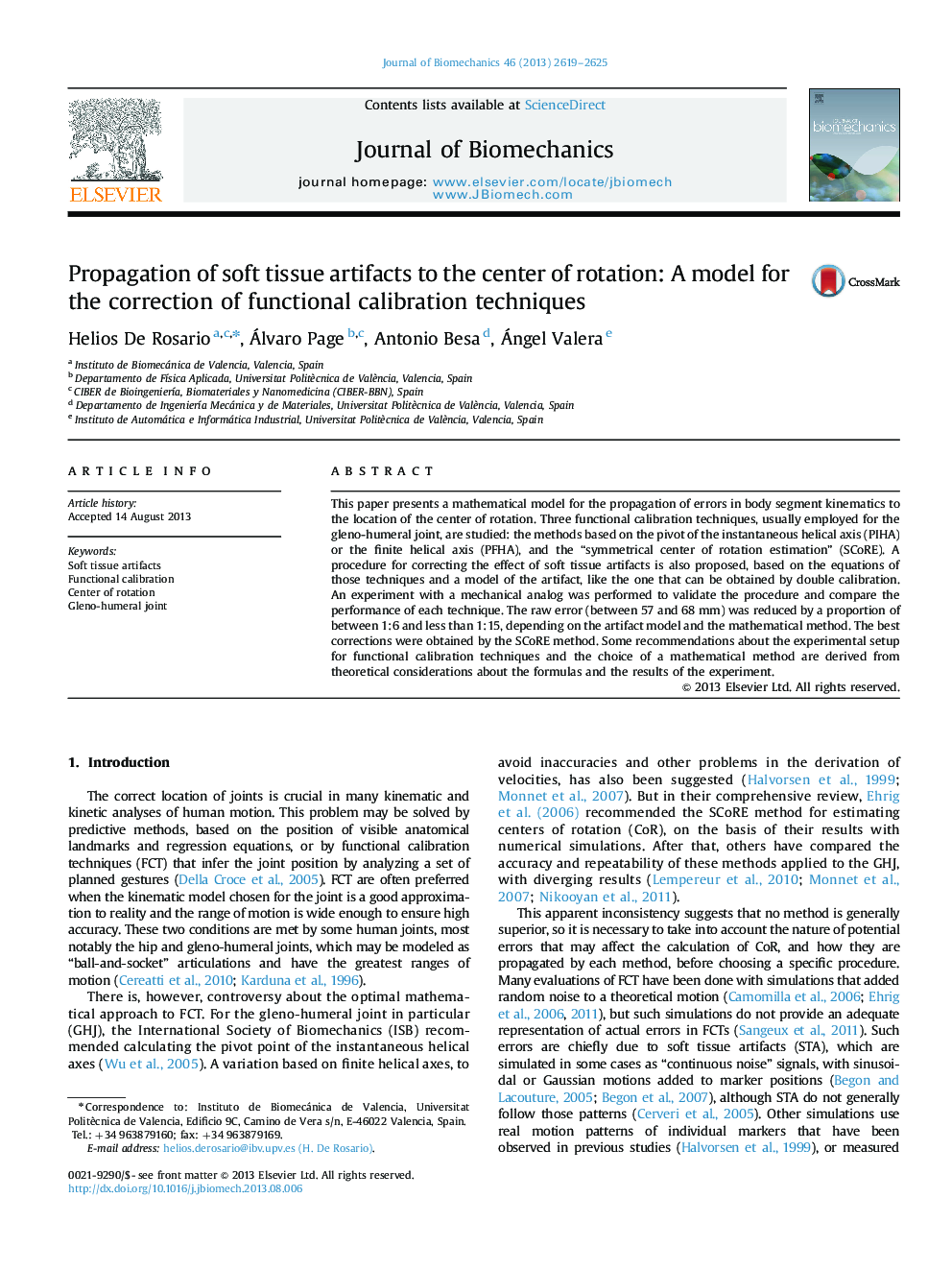| Article ID | Journal | Published Year | Pages | File Type |
|---|---|---|---|---|
| 10432311 | Journal of Biomechanics | 2013 | 7 Pages |
Abstract
This paper presents a mathematical model for the propagation of errors in body segment kinematics to the location of the center of rotation. Three functional calibration techniques, usually employed for the gleno-humeral joint, are studied: the methods based on the pivot of the instantaneous helical axis (PIHA) or the finite helical axis (PFHA), and the “symmetrical center of rotation estimation” (SCoRE). A procedure for correcting the effect of soft tissue artifacts is also proposed, based on the equations of those techniques and a model of the artifact, like the one that can be obtained by double calibration. An experiment with a mechanical analog was performed to validate the procedure and compare the performance of each technique. The raw error (between 57 and 68Â mm) was reduced by a proportion of between 1:6 and less than 1:15, depending on the artifact model and the mathematical method. The best corrections were obtained by the SCoRE method. Some recommendations about the experimental setup for functional calibration techniques and the choice of a mathematical method are derived from theoretical considerations about the formulas and the results of the experiment.
Related Topics
Physical Sciences and Engineering
Engineering
Biomedical Engineering
Authors
Helios De Rosario, Álvaro Page, Antonio Besa, Ángel Valera,
